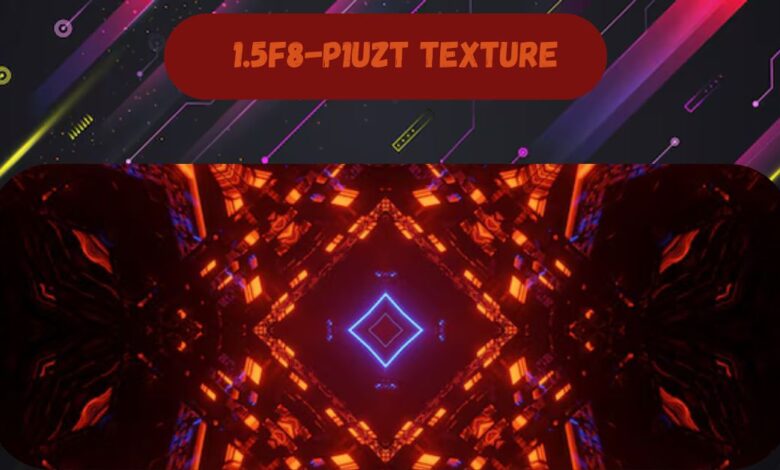Understanding the 1.5f8-p1uzt texture: A Comprehensive Guide

In the ever-evolving world of graphics, gaming, and visual design, textures play a fundamental role in adding depth, realism, and aesthetic appeal to digital creations. Among the multitude of texture formats and codes, the 1.5f8-p1uzt texture has emerged as a distinctive element, known for its unique properties and applications. But what exactly is the 1.5f8-p1uzt texture, and how does it enhance the quality and experience of digital media? This guide dives into everything you need to know about the 1.5f8-p1uzt texture, from its characteristics and usage to its role in various digital environments.
What is the 1.5f8-p1uzt texture?
The 1.5f8-p1uzt texture is a type of digital texture format used in high-end graphics applications. Typically found in gaming engines, 3D modeling software, and virtual environments, this texture offers advanced features for detailed rendering and enhanced visual quality. Its unique coding, represented by “1.5f8-p1uzt,” defines a specific format that adjusts texture characteristics like resolution, lighting response, and pixel depth.
The Importance of Texture Formats in Digital Media
Before delving into the details of 1.5f8-p1uzt, it’s crucial to understand why texture formats matter. Texture formats determine how a digital surface appears within a virtual scene. They affect aspects such as:
- Surface realism: High-quality textures make surfaces look lifelike.
- Performance: Efficient textures improve processing speed and reduce lag.
- Flexibility: Certain formats provide more options for editing and customization.
In short, textures bring objects to life in virtual spaces, and the 1.5f8-p1uzt format is particularly noted for its precision and detail.
Characteristics of the 1.5f8-p1uzt texture
1. High-Resolution Detail
The 1.5f8-p1uzt texture format is optimized for high-resolution outputs, meaning it provides clear, crisp details even when viewed up close. This high level of detail is ideal for users requiring textures for HD and 4K visuals, as it minimizes the pixelation seen in lower-quality textures.
2. Versatile Lighting Adaptability
One of the defining features of 1.5f8-p1uzt is its adaptability to various lighting conditions. It responds well to different lighting scenarios, making it suitable for both bright daylight settings and darker, shadowed scenes. This lighting flexibility enhances realism and is especially useful in dynamic environments, such as games or simulations.
3. Enhanced Texture Mapping Capabilities
Texture mapping in 1.5f8-p1uzt format is smooth and efficient. The code’s structure enables a precise distribution of texture data, allowing for accurate mapping across different surfaces. Whether it’s applied to rugged terrain or polished metal, the 1.5f8-p1uzt texture handles diverse surfaces with ease.
Applications of the 1.5f8-p1uzt texture
1. Gaming Industry
In video game development, textures are crucial for creating immersive environments. The 1.5f8-p1uzt texture is particularly suited to this field, as it allows for high detail and smooth integration with various gaming engines. Game developers can use it to enhance backgrounds, character models, and environmental details, giving players a more engaging visual experience.
2. Virtual Reality and Simulations
Virtual reality (VR) and simulations require textures that respond well to close inspection and interactive lighting. The 1.5f8-p1uzt texture offers both, making it a preferred choice in VR development. It’s used in training simulations, virtual tours, and even medical imaging to deliver realistic textures that respond to real-time adjustments.
3. Architectural Visualization
Architects and designers often rely on 3D visualizations to showcase their designs. With its high detail and lighting responsiveness, the 1.5f8-p1uzt texture provides a realistic representation of materials, from wood and marble to glass and concrete. This makes it invaluable for creating lifelike architectural renderings.
Technical Aspects of the 1.5f8-p1uzt texture
1. Compression and File Size
The 1.5f8-p1uzt texture format employs advanced compression techniques, which reduce the file size without compromising on quality. This compression allows for faster loading times and improved performance, a critical feature for large-scale applications like open-world gaming.
2. Compatibility with Rendering Engines
The format is compatible with many popular rendering engines, such as Unreal Engine, Unity, and Blender. This cross-compatibility makes it a versatile choice, especially in collaborative environments where projects may need to transition between different software platforms.
3. Pixel Density and Color Depth
The 1.5f8-p1uzt texture is designed to support high pixel density and color depth, allowing for richer and more vibrant visuals. This means colors appear more lifelike, gradients are smoother, and transitions between light and dark areas are more seamless, enhancing the overall visual impact.
How to Optimize the Use of 1.5f8-p1uzt textures
1. Adjusting Resolution Based on Requirements
While high-resolution textures like 1.5f8-p1uzt offer great detail, they can also demand more memory and processing power. For efficiency, adjust the resolution to suit the application. For example, 4K textures may be necessary for close-up shots, while 2K may suffice for background elements.
2. Utilizing Proper Lighting Settings
Since 1.5f8-p1uzt textures respond well to lighting, use this feature to your advantage. Experiment with ambient, point, and directional lighting to see how the texture reacts in different scenarios. Proper lighting can enhance the realism of the texture, making it appear more three-dimensional and lifelike.
3. Testing in Real-Time Environments
Testing the texture in real-time is essential, especially for interactive applications. Observe how the texture behaves under various conditions, such as movement, zoom, and angle changes. Adjust as necessary to ensure the texture looks consistent and realistic from all perspectives.
Challenges and Limitations of the 1.5f8-p1uzt texture
1. Processing Power Requirements
High-quality textures require considerable processing power, and the 1.5f8-p1uzt format is no exception. Users may experience lag or frame drops in lower-powered systems, especially when multiple high-resolution textures are in use.
2. Memory Usage
Textures with high detail and pixel density can consume substantial amounts of memory. This can lead to slower load times and higher system requirements, particularly in gaming and VR applications. Optimizing texture size and resolution can help, but there’s a trade-off between quality and performance.
Future of the 1.5f8-p1uzt texture in Digital Design
As technology advances, so will the demand for high-quality textures like 1.5f8-p1uzt. With trends pointing towards more immersive and realistic digital experiences, this texture format is likely to see expanded usage in gaming, VR, and even augmented reality. Additionally, with ongoing developments in GPU technology, we may soon see solutions that handle high-resolution textures more efficiently, reducing the limitations currently faced.
Conclusion
The 1.5f8-p1uzt texture represents a leap forward in texture quality and flexibility. Whether you’re a game developer, a VR designer, or a 3D artist, this texture format offers tools to bring virtual worlds to life with stunning detail and realism. While it may have its challenges, such as memory usage and processing demands, the 1.5f8-p1uzt texture remains a powerful asset in the realm of digital design, opening up new possibilities for creators.
FAQs
1. What makes the 1.5f8-p1uzt texture unique?
The 1.5f8-p1uzt texture is known for its high resolution, lighting adaptability, and detailed mapping, which make it suitable for realistic and dynamic visual applications.
2. Can the 1.5f8-p1uzt texture be used in all rendering engines?
Yes, this texture format is compatible with popular rendering engines such as Unreal Engine, Unity, and Blender, making it versatile across different platforms.
3. How can I optimize 1.5f8-p1uzt textures for better performance?
Optimize by adjusting resolution based on the application’s needs, managing lighting settings, and testing in real-time environments to balance quality and performance.
4. Is the 1.5f8-p1uzt texture suitable for low-powered devices?
Not ideally. Due to its high detail and processing needs, it may cause lag on lower-powered devices. Reducing texture resolution and using efficient lighting setups can help.
5. Where can I apply 1.5f8-p1uzt textures?
The 1.5f8-p1uzt texture is widely used in gaming, virtual reality, architectural visualization, and simulations due to its realistic representation capabilities.



